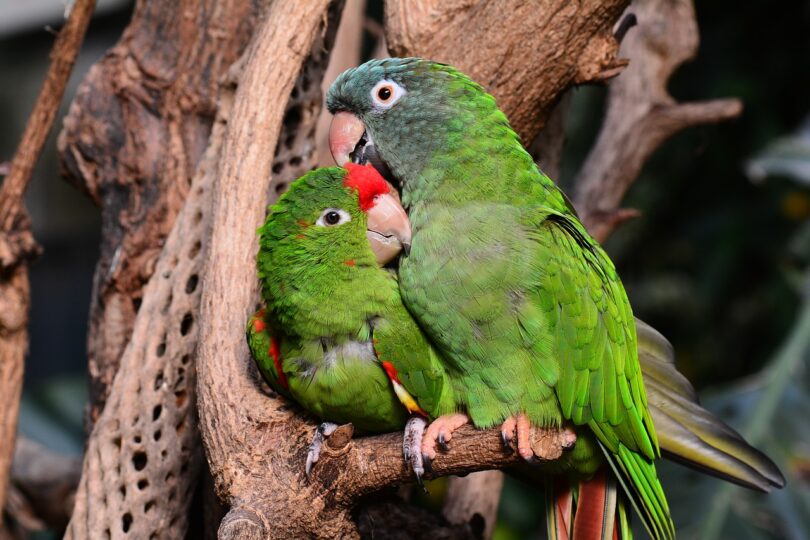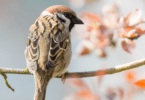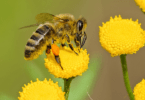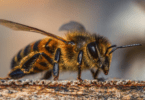When it comes to avian companions, lovebirds truly stand out. These delightful creatures are more than just beautiful pets; they are symbols of affection, joy, and companionship. Native to Africa, lovebirds captivate bird lovers with their vibrant colors, playful personalities, and incredible bonding behaviors. In this blog, we’ll explore the enchanting world of lovebirds, revealing why they hold a special place in the hearts of many.
1. A Brief Overview of Lovebirds
Lovebirds belong to the genus Agapornis, a name derived from the Greek word for “birds of love.” With their small size—typically growing between 5 to 7 inches—they may be petite, but they certainly make a big impression! There are nine recognized species of lovebirds, each boasting unique colors and characteristics. The most popular ones among bird enthusiasts include the Peach-faced Lovebird, Fischer’s Lovebird, and the Masked Lovebird.
Imagine a Peach-faced Lovebird, with its soft green body and rosy cheeks, playfully flitting around its cage. Or picture the vibrant yellows and greens of Fischer’s Lovebirds as they engage in their endearing antics. Each species brings its own charm, captivating anyone who catches a glimpse.
2. Strong Bonding Behavior
One of the most remarkable aspects of lovebirds is their extraordinary capacity for forming strong pair bonds. In the wild, these birds thrive in flocks, but when they find a mate, they enter a world of companionship. Observing lovebirds cuddle, preen each other’s feathers, and share playful moments is heartwarming. This deep bond is not exclusive to breeding pairs; lovebirds can also develop meaningful connections with their human caregivers.
3. Colorful Personalities
Lovebirds are known not only for their striking colors but also for their vibrant personalities. Their feathers can be a kaleidoscope of bright greens, yellows, pinks, and blues. Beyond their appearance, these playful parrots are naturally curious and intelligent. They love to play with toys, climb, and explore their environment.
To keep them happy and engaged, it’s essential to provide mental stimulation through various toys and interactive activities. Imagine watching a lovebird swing on a toy or navigate a small obstacle course you set up for them—it’s a delightful sight that brings joy to any bird owner!
4. Communication Skills
These charming birds are quite vocal and possess a wide range of sounds to express themselves. From gentle chirps to loud squawks, lovebirds communicate their feelings, making them quite chatty companions. With patience and encouragement, they can also learn to mimic words and phrases.
Spending time talking to your lovebird not only strengthens your bond but also enhances their vocal skills. Picture yourself sitting beside your lovebird, chatting away, and hearing it mimic your laughter—it’s these moments that truly enrich the experience of having a pet.
5. Diet and Care
A healthy diet is crucial for keeping lovebirds vibrant and active. Their primary diet should consist of high-quality pellets, along with a variety of fresh fruits and vegetables. Favorites include apples, berries, and leafy greens, which can be enticing snacks. Always ensure fresh water is available, as hydration is essential for their well-being.
Regular veterinary check-ups are also vital to monitor their health. A well-cared-for lovebird is a happy lovebird, and your investment in their care will be richly rewarded with their affection and companionship.
6. Social Animals
Lovebirds are incredibly social creatures and thrive on interaction. It’s essential to spend quality time with them daily, engaging in play and providing companionship. If your lifestyle is busy, consider adopting two lovebirds so they can keep each other entertained. Just remember to introduce new birds carefully, as lovebirds can be quite territorial.
7. Nesting and Breeding
If you decide to breed lovebirds, providing a suitable nesting box is crucial. Female lovebirds will often lay a clutch of 3 to 6 eggs, and after about 21 days, the eggs will hatch. Both parents take part in raising their chicks, creating a nurturing environment for the next generation. Watching lovebird parents care for their young can be an incredible experience that showcases the beauty of avian family life.
Lovebirds are not just pets; they are loving companions that bring joy and warmth to our lives. With their stunning colors, playful nature, and profound bonds, they have captured the hearts of many bird enthusiasts. If you’re considering adding a lovebird to your family, remember that they require time, attention, and love to thrive. The investment in their care and companionship pays off in countless ways.









